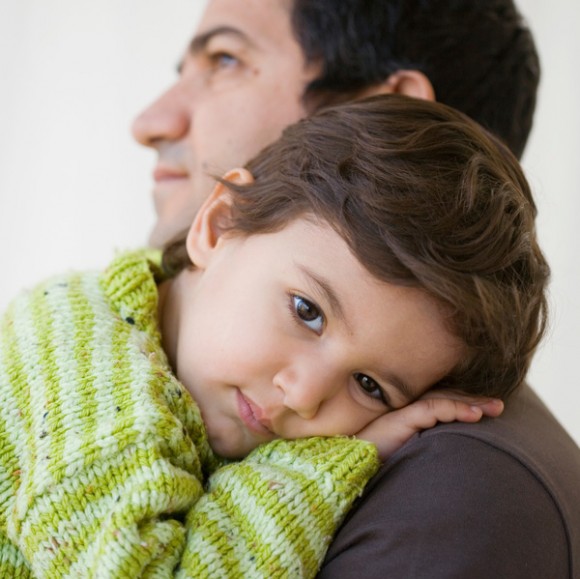Understanding Emotions
By Mary Hartzell
How we communicate with children has a profound impact on how they develop. Young children are very sensitive to the significant adults in their lives and build their self-understanding upon the interactions they have with their parents, teachers and caregivers. When these primary and secondary attachment figures have a deeper self-understanding they can offer a foundation of emotional well-being and security that enables children to thrive.
Research in the field of child development has demonstrated that a child’s security of attachment to parents is very strongly connected to the parent’s understanding of their own early-life experiences. It is not just what happens to the parent in their early life but also how they have come to make sense of those experiences that influence their interactions with their own children. It is through a deeper understanding of ourselves that we deepen our connections and relationships with others. Communication that involves an awareness of our own emotions, an ability to respectfully share our emotions and an empathic understanding of our children’s emotions lays a foundation that supports the building of lifelong interpersonal relationships. Your ability to communicate about emotions supports a child in developing a sense of vitality and empathy; and these qualities are important for the nurturing of close, intimate relationships throughout the life span.
So often we are preoccupied with changing a child’s behavior and are unaware of the emotions that may have been motivating the behavior. When the sense of connection that comes from the sharing of emotions and a sense of feeling felt is absent, a child is usually not open to listening to us, even if we think we are saying exactly the right thing.
Let’s look at how this might translate into your interactions with a child. When a child does something that you deem as misbehavior, your first response sets the tone for what will happen next. If the child sees you as a threat, because your voice is loud and intense, and your face looks angry, he will either fight, flee, or freeze in an effort to defend himself against this uncomfortable or frightening experience. With the child in a defensive mode, he is no longer open and available to take in whatever good advice you may be giving him. It is no longer a teachable moment, unless what you want to be teaching him is what an adult does when she gets angry or frustrated. Your emotional intensity is running interference to making a connection that could open the channels for communication and help the child understand his own emotions and make changes in his behavior.
Connecting to primary emotional states is how we tune in to each other’s feelings. When a child feels positive sensations, like joy and mastery, an adult can share this emotional state and reflect it with the child. It is especially helpful to reflect the experience in a way that gives the experience back to the child, rather than just letting them know what you think and how you feel. Likewise, when a child feels negative or uncomfortable sensations, the adult can offer respectful listening that doesn’t judge the child and a soothing presence that can comfort the child. In these moments when a child is full of emotion, if our first response is one of joining with them they are able to experience a connection that enables them to reorganize.
When emotions, which are a function of the right hemisphere of the brain, are no longer so intense and raw, the child will be better able to engage the left hemisphere where logic, cause, and effect, and reason reside. The parent can then support the child in learning problem solving skills. If we try to move too fast and ignore or minimize the child’s feelings, they go unprocessed and are not able to be integrated into a loving self-acceptance. The same goes for us as adults. If we ignore our emotions they often grow and we end up being triggered by some event later and react in ways that we may regret. When a child experiences an attuned connection from a responsive empathetic adult, they feel good about themselves because their emotions have been given resonance and reflection. When we join with children in attuned communication we support them in a developing an integrated and coherent story of their own lives.
Understanding the important role that emotions play in our lives and the lives of children can help us to slow down and listen. When children are upset or distressed we can reflect their experience rather than quickly try to fix the situation. This helps them to integrate their emotions and develop a more coherent sense of self. Whether they are upset because of an interaction with another child or a task they’re finding frustrating, our mindful, empathetic listening is the best first response. By making a meaningful connection and reflecting from their point of view we help them to see themselves more clearly, deepen their self-understanding, and make more successful choices in the future. Isn’t that the essence of our work as parents: building a future where children respect both themselves and others and create meaningful, caring relationships in their own lives?
Mary Hartzell has over 30 years experience working with children, parents, and teachers. She is the director of First Presbyterian Nursery School, a Reggio inspired early childhood program in Santa Monica, California. Mary teaches parent education classes and has a private consulting practice. She is an adjunct professor Santa Monica college. Mary has appeared on National Public Radio, CBS news, and Century Cable television as an expert in child development and parenting issues. Her CD, “Parent/Child Relationships” is the first in a series of resources for parents. Mary is co-author with Daniel J Siegel of “Parenting From the Inside Out”. Published by Penguin Putman Press, (2003)
Posted in: Uncategorized
